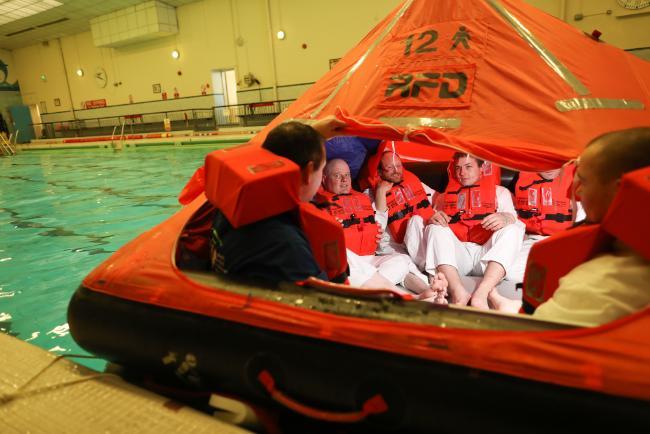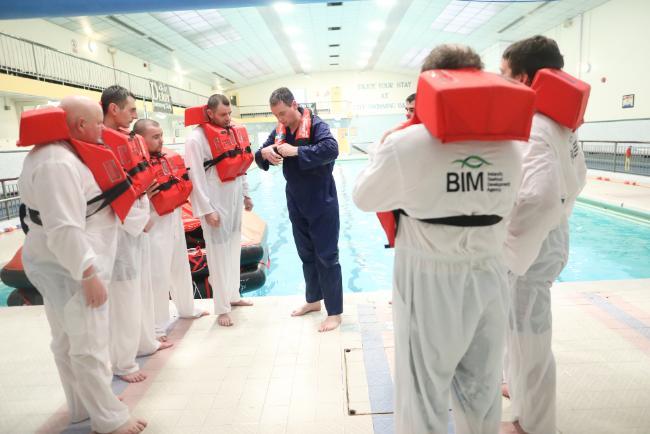BIM – Supporting Safety at Sea
2,127 fishing vessels are registered in Ireland and over three thousand adults work in fisheries according to the 2018 Business of Seafood report. Bord Iascaigh Mhara (BIM) works closely with members of the fishing sector in Ireland to provide safety training. Ireland’s seafood development agency also administers funding of safety equipment.
Since its introduction in 2001, over 8,000 members of the Irish fishing sector have completed BIM basic safety training and have been issued safety cards. Moreover, almost 2,000 Bord Iascaigh Mhara (BIM) Personal Flotation Devices (PFDs) have been issued to owners of Irish registered fishing vessels in the last 5 years.
Ian Mannix, Head of Skills and training at BIM said:
“The fishing industry can be highly rewarding and for many, it’s more than a job, it’ a way of life. However, fishing remains the most dangerous occupation in Ireland. Having appropriate safety training and equipment is essential.”
BIM offers a range of practical training courses designed to provide skills to those working in the sector in the areas of personal safety and survival techniques.
Since the BIM Enhanced Safety Training (EST) was launched in 2013 almost 2,000 BIM Personal Flotation Devices (PFDs) with integrated Personal Locater Beacons (PLBs) have been issued to owners of Irish registered fishing vessels.
A range of practical training designed to increase knowledge of personal safety and survival techniques are also available. These include a short course delivered over 1 day, the Standards of Training and Certification of Watchkeeping for Seafarers (STWC) – Personal Survival Techniques Certificate, issued by BIM on behalf of the Department of Transport, Tourism & Sport (DTTAS).
This course involves a mix of practical and classroom-based learning by trained BIM staff.
The theory element covers personal survival techniques, onboard safety equipment, use of Personal Flotation Device (PFD) and Personal Locator Beacon (PLB), maintenance of safety equipment, musters and drills, abandon ship, life raft equipment, survival techniques onboard the raft and the role of the Emergency and Rescue Services.
The practical exercise takes place in a swimming pool and includes launching a life raft, boarding a raft in dry and wet conditions, taking injured casualties on-board the life raft and the procedure for righting an up-turned life raft.
These are the essential skills required to demonstrate proficiency in how to survive at sea in the event of having to abandon ship or an accident. Further on-board training and industry experience may be needed to maintain the required standard of competence at sea.
Financial Support
Grant aid of up to 50% of course fees and learner support costs are available for individuals working in the sector.
Financial assistance is also available under the Fleet Safety Scheme which provides grant aid of up to 60% for the purchase and installation of a full range of safety items including statutory life-saving, fire-fighting, navigation and radio communication equipment.
As described by whelk fishermen Gerry Copeland, James Byrne and David Massey following the sinking of their boat MFV Lavicca, which capsized off the Wicklow coast on April 15th, 2015, David recalls how, on a seemingly normal, flat calm day, things can change very suddenly.
‘‘We were hauling a string of pots and suddenly the boat took a jolt. Gerry had reached for the VHF radio but didn’t have time to make the call before we went over and he was trapped inside the wheel – house.Gerry managed to find an air pocket, took a gulp of air and dived out of the door and up the side,” Mr Massey said.
“As soon as James asked where the life raft was, it popped up too. The emergency position indicating radio beacon (EPIRB) in the wheelhouse also floated free.”
The boat sank within a few minutes, however, as a result of the safety equipment onboard and on their person, rescue services were soon on the scene and they were airlifted to safety.
As Gerry says ‘‘Only for the lifejackets we had on us, I wouldn’t be standing here today.’’
It is an ongoing campaign with BIM to change the culture in the sector to the belief that a well-trained crew is a safe crew.
For more information visit http://www.bim.ie
ENDS







